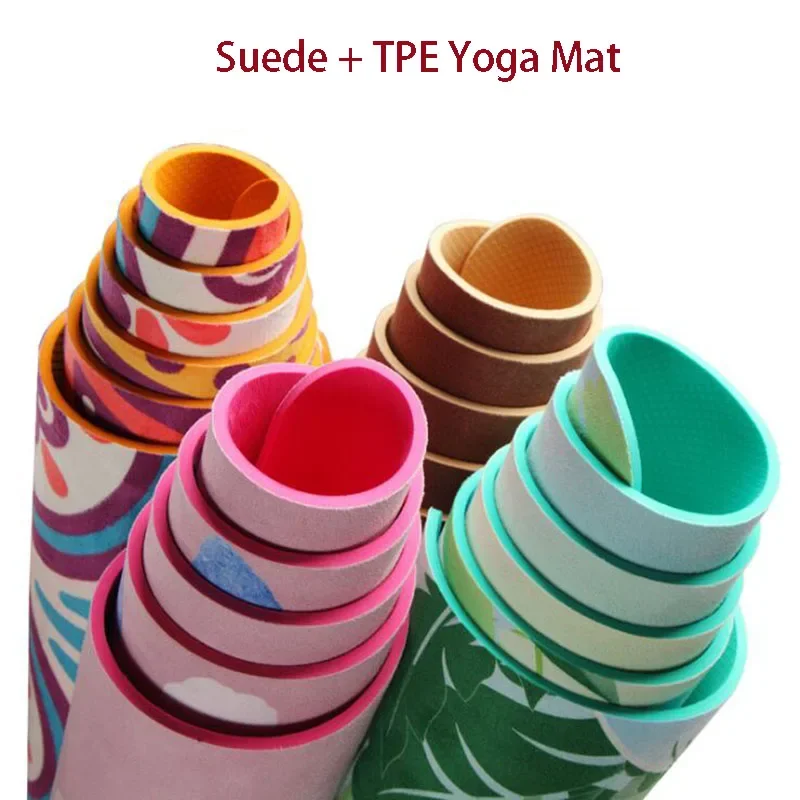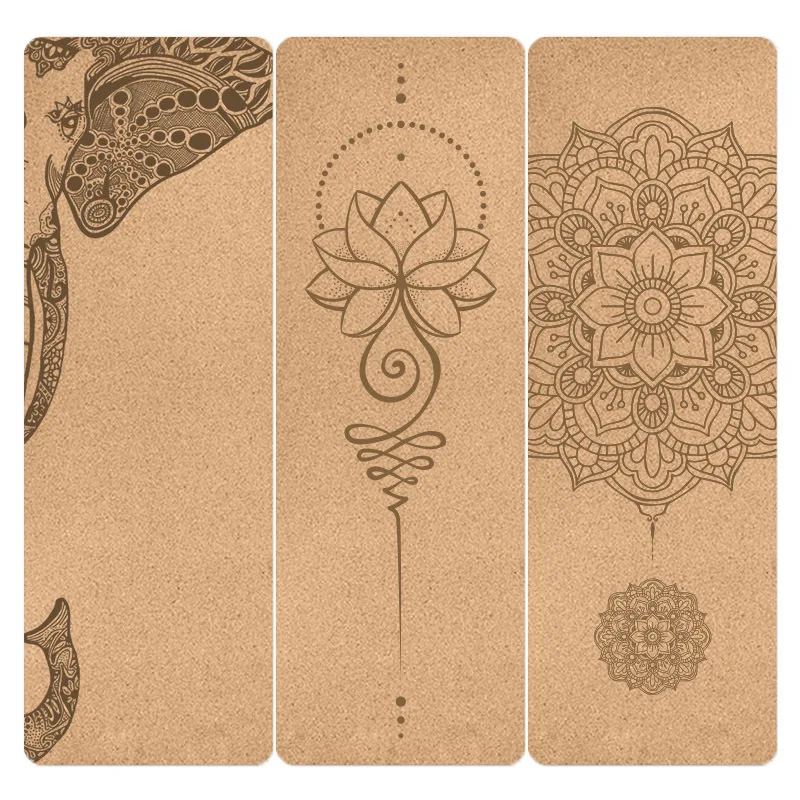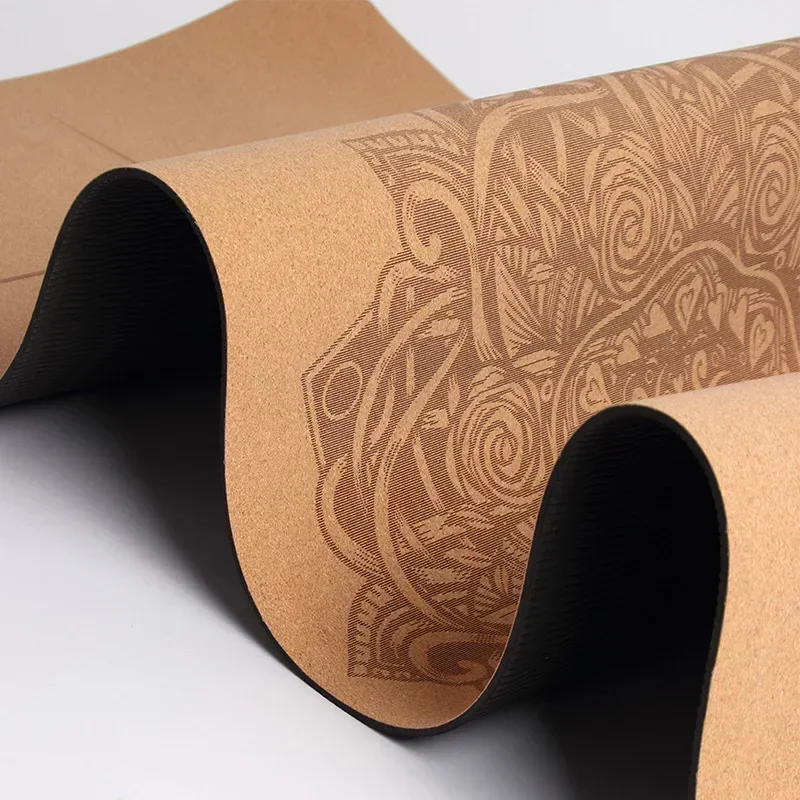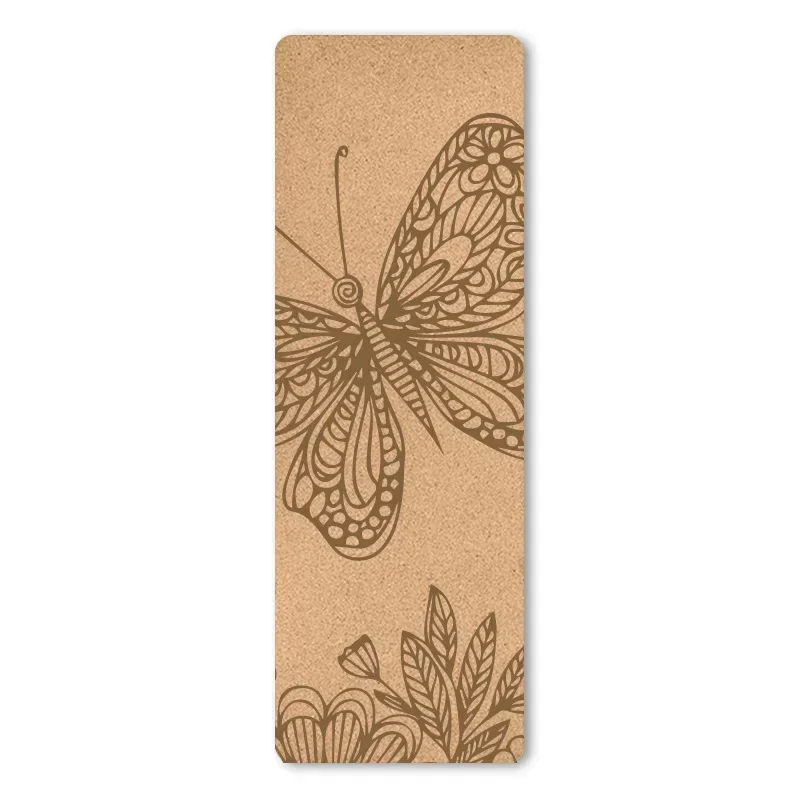A yoga mat is more than just a piece of gear—it’s your sanctuary, your foundation, and sometimes your escape from a chaotic day. Whether you’re holding Warrior II for the umpteenth time or discovering your first Downward Dog, the right yoga carpet can transform your practice from frustrating to fulfilling. Think of it as your partner on the mat, supporting you through every wobble and triumph.
But let’s face it: choosing the best yoga mat can feel like navigating a maze of foam, rubber, and cork. Do you go for a non-slip yoga carpet, an eco-friendly yoga carpet, or one with fancy alignment lines? And what about thickness—are you doomed to ache if you don’t get it right? Don’t worry. This guide will help you make sense of the options so you can find a mat that fits your practice and your personality. Ready to roll out your perfect mat? Let’s dive in!

Yoga Mat 101: Why Your Choice Matters More Than You Think
Choosing the right yoga carpet isn’t just about aesthetics; it’s about creating a stable and supportive foundation for your practice. The wrong mat can hinder your flow, while the right one can elevate your experience and even your mindset. Let’s explore why this decision is worth your attention.
What Is a Yoga Mat and Why Is It Essential for Your Practice?
A yoga mat is more than just a cushioned rectangle—it’s your personal island of focus and balance. It provides the grip needed for stability, the padding to protect your joints, and a clean, designated space for your practice. Whether you’re working on a yoga carpet for beginners or upgrading to a yoga mat for hot yoga, every choice has a purpose.
When you practice on a mat tailored to your needs, your postures align better, and you feel safer attempting challenging poses. A thick yoga carpet cushions sensitive knees, while a non-slip yoga mat ensures you don’t turn your Vinyasa flow into a slip-and-slide. Essentially, the right yoga carpet fosters confidence, which leads to a deeper connection with your practice. Think of it as your silent teacher—it’s always there to catch you, quite literally.
Common Mistakes People Make When Choosing a Yoga Mat
Selecting a yoga mat can be overwhelming, and it’s easy to make rookie mistakes. One common error? Focusing only on price. Sure, a bargain might seem tempting, but a cheap mat often leads to quick wear and poor grip. Investing in quality, like an eco-friendly yoga carpet or a mat with alignment lines, ensures longevity and performance.
Another misstep is ignoring your specific practice needs. For example, a yoga mat for bad knees should have ample cushioning, while a yoga mat for Pilates should offer enough firmness for balance. Skipping these considerations might result in discomfort or frustration. Aesthetics, too, can blindside even seasoned yogis. A yoga carpet with a design might look Instagram-worthy, but if it doesn’t have features like a non-slip surface, it’s more decoration than function. Avoid these pitfalls by prioritizing functionality over flair—your practice will thank you.
The Hidden Risks of Using the Wrong Yoga Mat
Practicing on the wrong yoga carpet isn’t just inconvenient—it can be downright risky. Imagine trying to hold a balancing pose on a slippery surface or sinking too deeply into a mat that’s overly padded. These situations can lead to strained muscles, misaligned postures, or even falls. For those practicing on hard surfaces, the absence of a yoga mat for hardwood floors can mean unnecessary strain on your joints. Similarly, outdoor enthusiasts who skip a yoga carpet for outdoor use risk tearing their mat on rough terrain.
Even more subtle risks, like a mat that doesn’t align with your energy, can throw off your focus. A yoga mat for meditation with calming colors or a grounding material like cork can make all the difference. Your yoga mat isn’t just a tool; it’s part of your practice’s foundation—both physically and energetically. Choose wisely to keep your body safe and your mind serene.
Exploring Yoga Mat Materials: Which One Suits You Best?
Yoga mats come in various materials, each offering distinct benefits depending on your practice and values. From sustainability to durability, understanding the material of your yoga carpet is key to finding the perfect one for your flow. Let’s take a closer look at the options.

Eco-Friendly Yoga Mats: Are They Worth the Hype?
An eco-friendly yoga carpet isn’t just kind to the planet; it’s often a joy to practice on. Materials like natural rubber, cork, and jute provide excellent grip, durability, and comfort. These mats align with the yogic principle of Ahimsa, promoting non-violence by avoiding synthetic or harmful materials. Plus, they’re biodegradable, making them a great choice for the eco-conscious yogi.
However, eco-friendly mats aren’t without their quirks. They may have a slight natural scent when new or lack the vibrant colors seen in synthetic mats. But if you value sustainability and a connection to nature during your practice, an eco-friendly yoga mat is absolutely worth it. Remember, every choice you make in yoga reflects your practice off the mat—why not let your mat lead by example?
PVC vs. TPE Yoga Mats: Decoding the Differences
PVC and TPE mats are some of the most popular synthetic options for yogis. PVC mats are known for their durability and affordability, making them a solid choice for those on a budget. On the other hand, TPE mats are a more modern option, offering lightweight construction, better grip, and a more eco-friendly profile compared to traditional PVC. Both materials are great for intense styles like hot yoga, as they are sweat-resistant.
Despite their benefits, synthetic mats do have drawbacks. PVC mats are less sustainable and can have a slippery surface when wet, while TPE mats may wear down faster with regular use. If you’re torn between affordability and performance, consider the demands of your practice before making your pick. Ultimately, the best mat is one that balances durability and functionality.
The Pros and Cons of Cotton and Fabric Yoga Mats
For a lightweight and travel-friendly option, cotton and fabric yoga carpets are worth considering. These mats are breathable and provide a unique texture, making them ideal for slower-paced practices or meditation. A yoga mat for meditation made of cotton can feel grounding and enhance your focus during mindfulness exercises.
However, they lack the cushion and grip offered by rubber or PVC mats, which might be a dealbreaker for certain styles. Cotton mats are best suited for layering over other mats or soft surfaces like carpet. If portability and natural vibes are your priorities, a cotton mat could be your perfect companion—just don’t expect it to handle slippery poses or high-intensity flows with ease.
Yoga Mat Features You Never Knew You Needed
When it comes to yoga carpets, the details make all the difference. From thickness to grip, these features can elevate your practice, ensuring comfort and stability in every pose. Let’s uncover the features you didn’t know you needed.

How Thickness Impacts Your Yoga Experience
The thickness of a yoga mat can drastically alter your practice. A thick yoga mat—ranging from 6mm to 10mm—offers excellent cushioning, making it ideal for joint support during seated poses or for those practicing on hard floors. It’s especially beneficial if you need a yoga carpet for bad knees or sensitive wrists. However, a thicker mat can sometimes compromise balance during standing poses, as it creates a softer surface.
On the flip side, thinner mats (3mm to 5mm) provide a firm connection to the ground, making them ideal for styles that emphasize balance and stability, like Ashtanga or Vinyasa. Whether you choose thick or thin depends on your practice style and personal preferences. Remember, comfort shouldn’t come at the cost of performance—find the balance that works for you.
The Science of Grip: Why Non-Slip Yoga Mats Are a Game-Changer
Grip is a non-negotiable feature in a yoga mat. A non-slip yoga carpet ensures your poses stay steady, even when sweat begins to pool during intense sessions. This is especially crucial for practices like hot yoga, where moisture can turn your mat into a skating rink. Mats with advanced grip technology—such as textured surfaces or rubber coatings—can prevent slips and keep you focused on your flow.
Poor grip isn’t just inconvenient; it can lead to injuries as you struggle to stabilize yourself. Choosing a mat with a firm, non-slip surface is essential for building confidence in your poses. Whether it’s a yoga mat with grip or one specifically designed for sweat-heavy practices, like a yoga carpet for hot yoga, prioritizing grip means prioritizing safety.
Portability Matters: Lightweight vs. Heavy-Duty Yoga Mats
A portable yoga mat is essential for yogis on the go. A travel yoga mat is typically thinner and lighter, making it easy to carry without adding bulk to your day. Many come with a yoga carpet with carrying strap or compact folding options, perfect for slipping into a backpack or suitcase.
Heavy-duty mats, while less portable, are designed for durability and stability, making them great for home use or studio practices. They often feature additional padding and advanced grip, but their weight can be a hassle when you’re on the move. Whether you’re an at-home yogi or an outdoor enthusiast, the choice between lightweight and heavy-duty depends on where—and how—you like to practice.
Picking the Perfect Yoga Mat for Your Style and Space
Every yoga practice is unique, and so is the ideal mat for it. From home workouts to outdoor flows, finding a yoga mat that fits your style and space is crucial. Let’s explore some tailored options for different needs.

Best Yoga Mats for Home Workouts
Practicing yoga at home requires a yoga carpet that balances comfort, durability, and adaptability. A yoga mat for hardwood floors is ideal if you have a solid surface, as it provides ample cushioning to protect your joints. For those with carpeted areas, a mat with enhanced grip ensures stability, so your poses don’t slide off track.
Home yoga mats should also cater to multipurpose use. Look for features like extra padding or a yoga carpet with alignment lines, which guide your poses while offering maximum comfort. If you’re setting up a dedicated yoga corner, consider mats with calming colors or minimalist designs to create a serene space. Practicing from home doesn’t mean compromising on quality—invest in a mat that supports your flow, every time.
Yoga Mats Designed for Hot Yoga Lovers
Hot yoga enthusiasts need a mat that can handle the heat—and the sweat. A yoga mat for hot yoga is specifically designed with moisture-wicking materials and textured surfaces to maintain grip during intense sessions. Mats made of natural rubber or those with built-in microfiber layers are perfect for absorbing sweat while keeping you stable.
Durability is another key factor. Frequent exposure to heat and moisture can wear down regular mats quickly, so choose one that’s resistant to wear and tear. Features like a yoga carpet with towel or quick-drying surfaces make post-practice cleanup a breeze. With the right mat, you can fully immerse yourself in your flow without worrying about slipping or soggy surfaces.
Outdoor Yoga Enthusiasts: Mats That Withstand the Elements
Outdoor yoga brings a refreshing energy to your practice, but it also comes with challenges like uneven terrain and exposure to the elements. A yoga mat for outdoor use should be durable enough to withstand rough surfaces, from sandy beaches to grassy parks. Materials like cork or natural rubber offer excellent resilience and grip, even on unpredictable ground.
Portability is essential for outdoor yogis. Look for a travel yoga carpet or one with a yoga mat with carrying strap, making it easy to transport wherever your practice takes you. Outdoor mats should also be easy to clean, as dirt and debris can accumulate quickly. With the right mat, nature becomes your ultimate yoga studio.
Yoga Mat Accessories and Maintenance Tips You Can’t Ignore
Your yoga mat is a vital part of your practice, but the right accessories and proper care can enhance its performance and longevity. Let’s dive into some essential tips to keep your mat in top shape.

Must-Have Accessories to Pair with Your Yoga Mat
Accessories can make your practice smoother and more enjoyable. A yoga carpet with carrying strap is a must for those on the go, allowing you to transport your mat with ease. If you travel frequently, consider investing in a yoga mat with bag included for added protection against dirt and wear. For storage, a simple mat holder or a wall-mounted rack can keep your mat organized and within reach.
Cleaning sprays are another essential accessory, particularly if you practice hot yoga or share mats in a studio. Pair your mat with a natural, non-toxic cleaning solution to keep it fresh and odor-free. These small additions might seem minor, but they significantly improve your overall experience, ensuring every session is as seamless as possible.
How to Clean and Care for Your Yoga Mat for Longevity
Regular maintenance is key to keeping your yoga carpet in excellent condition. Start by wiping your mat after each practice with a damp cloth or a dedicated mat cleaner. For deeper cleaning, soak your mat in warm water with mild soap and let it air dry. Avoid harsh chemicals, as they can damage the surface, especially on eco-friendly yoga mats.
Store your mat in a cool, dry place to prevent it from becoming brittle or developing odors. A yoga carpet with carrying case can offer additional protection when traveling or storing it long-term. Proper care not only prolongs the life of your mat but also ensures it remains a hygienic and safe space for your practice. Treat your mat well—it’s your loyal companion on your yoga journey.
Signs It’s Time to Replace Your Yoga Mat
No matter how well you care for your yoga mat, it won’t last forever. Over time, wear and tear can compromise its performance and safety. Signs like visible cracks, peeling layers, or a loss of grip indicate that your mat has served its purpose. If your non-slip yoga mat starts feeling slippery or uneven, it’s time to upgrade.
Consider replacing your mat every one to two years, depending on the intensity of your practice. Investing in a new yoga mat with alignment guides or advanced cushioning can revitalize your sessions and prevent injuries. A fresh mat not only enhances your practice but also keeps your commitment to yoga alive and thriving. Don’t hold onto a worn-out mat—let it go and embrace the new!
Conclusion: Your Path to the Perfect Yoga Mat
Choosing the right yoga mat isn’t just about improving your practice—it’s about honoring your journey as a yogi. Whether you’re perfecting your poses on a non-slip yoga mat, finding balance with an eco-friendly yoga mat, or embracing comfort with a thick yoga mat, your mat is a reflection of your dedication and growth. The perfect mat doesn’t just support your body; it nurtures your mind and spirit.
Now that you’re equipped with the knowledge to find the best yoga mat for your needs, it’s time to take action. Explore your options, prioritize what matters most to your practice, and invest in a mat that resonates with you. Ready to make your next yoga session your best yet? Begin your search today and let your mat inspire you to roll out and rise up!

